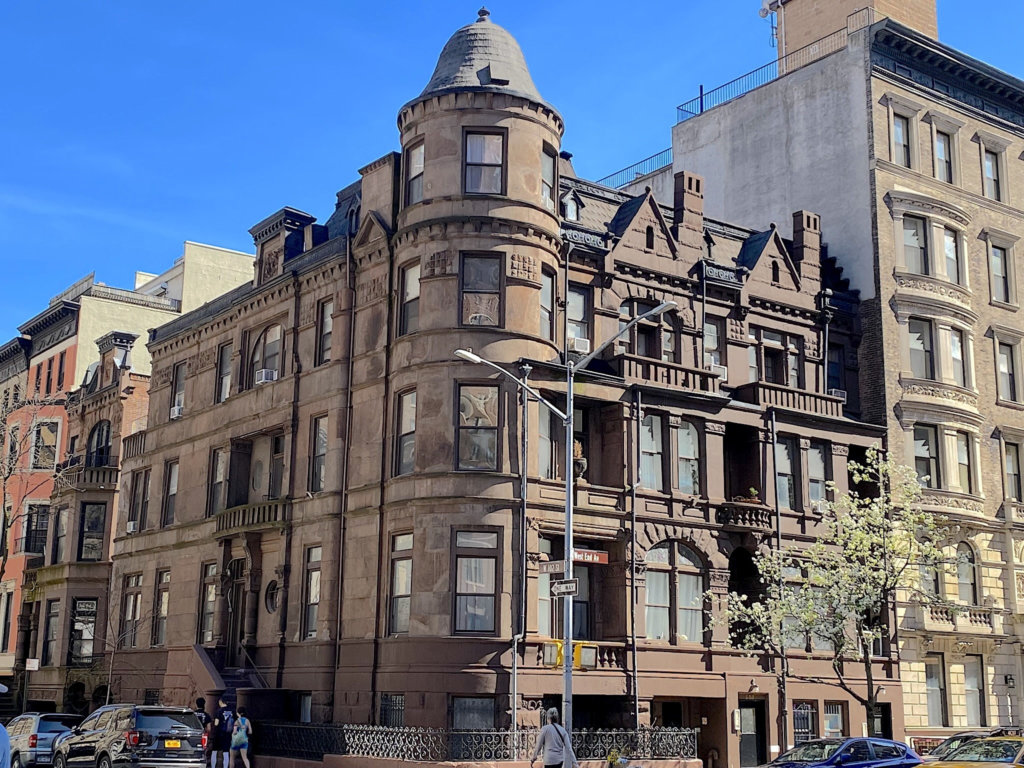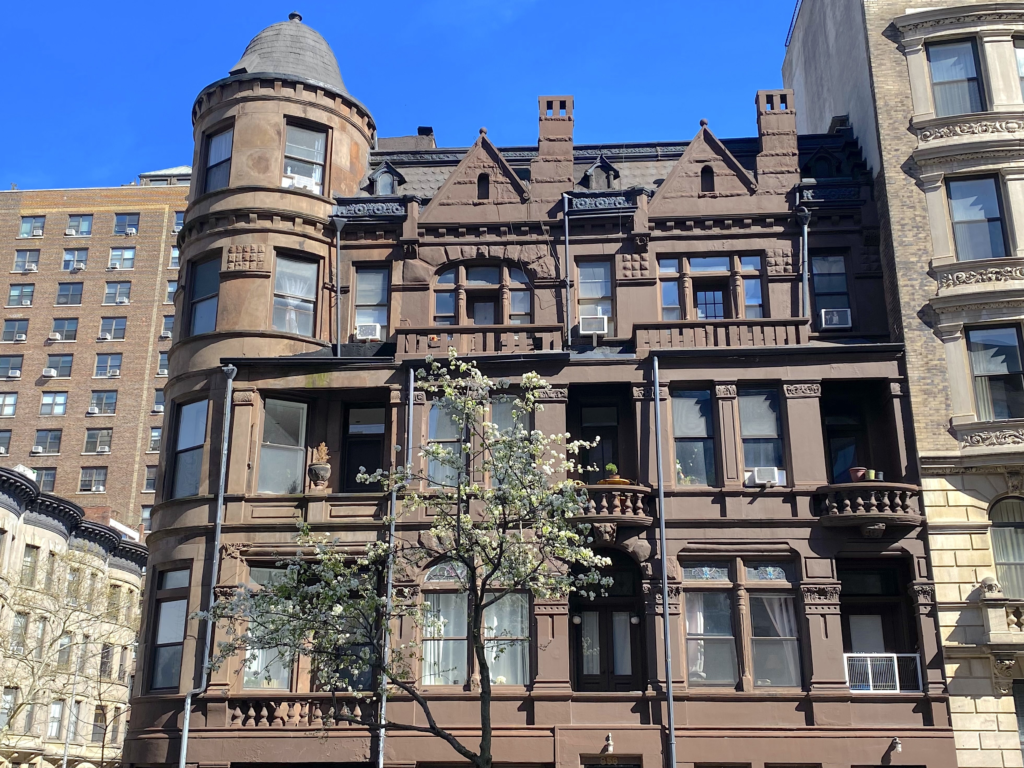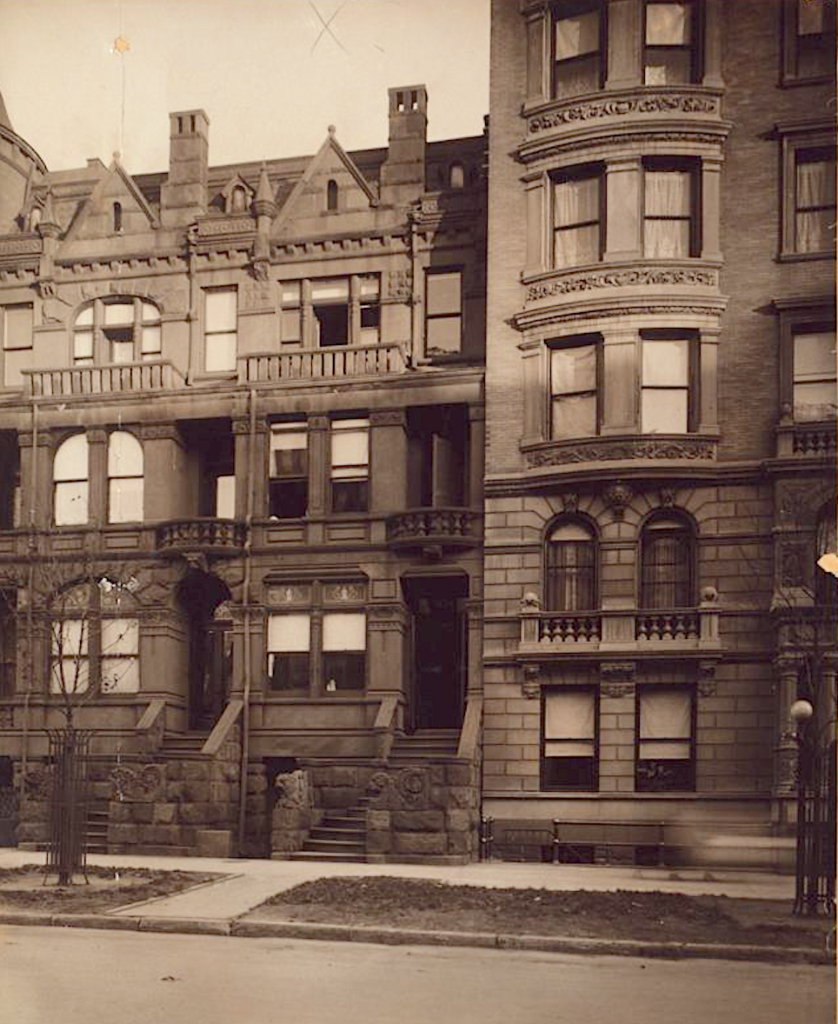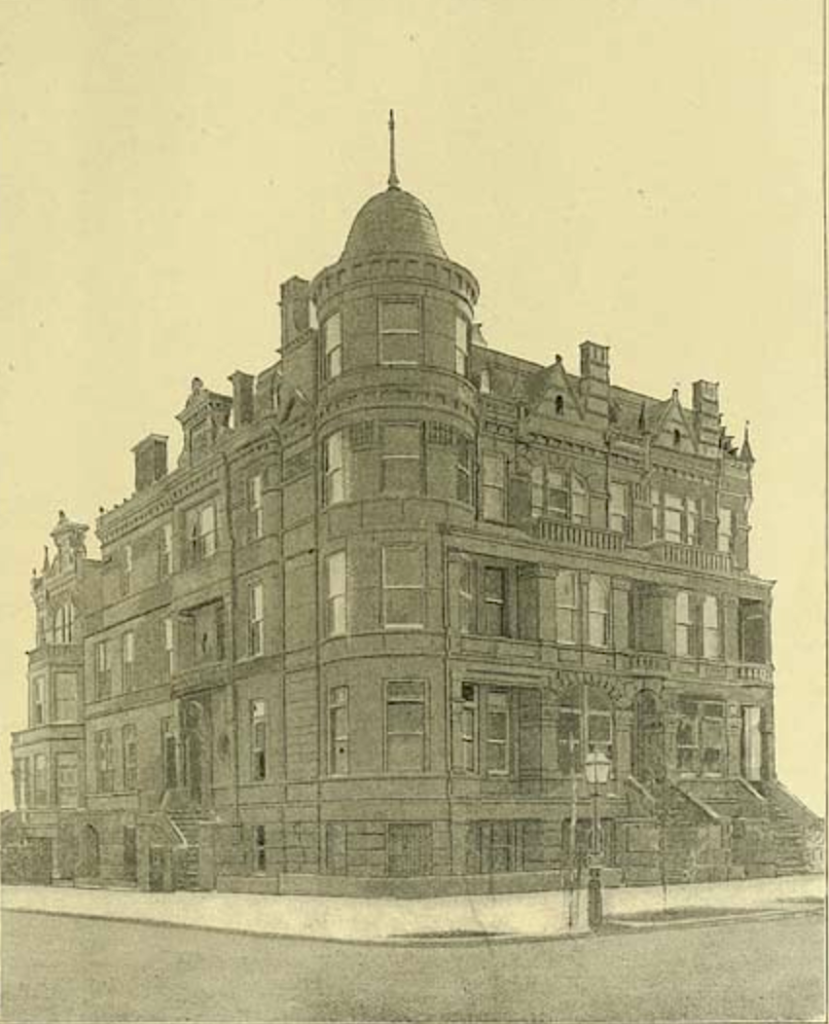Wednesday, April 17, 2024 – HOW MANY BUILDINGS DO YOU SEE?


APRIL 17, 2024
A cluster of delightful
West Side row houses
that look like one
enormous mansion
ISSUE # 1222
EPHEMERAL NEW YORK

Look up at the massive brick and mortar confection at the southeastern corner of West End Avenue and 102nd Street, and you might think you’re facing one wildly idiosyncratic Gilded Age mansion.
There’s the center tower with four stories of bay windows capped by a bell-shaped roof. On the West End Avenue side are chimneys, carved panels, stained glass, and windows of all styles. On the 102nd Street end, balconies, pedimented parapets and a stoop entrance animate this sleepy side street.
Because all these ornamental eccentricities are united in brownstone and fronted by a lacy iron fence, it seems like one house—specifically a surviving example of one of the mansions built in the late 19th century in the rapidly urbanizing West End of Manhattan (the Upper West Side of today).

But a closer look tells a different story. Rather than one mansion, this corner features four separate townhouses completed in 1893. As a group, it’s the “sole surviving example of a type of site planning used on several corner plots on West End Avenue in the early 1890s,” stated the Landmarks Preservation Commission (LPC) in 1990.
Number 858 is in the center, and numbers 854 and 856 face West End Avenue. Number 254 West 102nd Street is around the corner, unattached to its three sisters except by a thin band of brownstone above a path leading to the shared backyard (below left).
These clusters of fanciful row houses were a popular house style on the Upper West Side of the late 1800s, as the LPC pointed out. The style worked for builders, who wanted to maximize profits on the corner lots they purchased by putting up as many separate houses as possible.

Meanwhile, discerning middle- and upper middle class buyers were turning up their noses at the traditional brownstone row houses built in the 1860s and 1870s. Instead, they desired dwellings that rebelled against what was then considered boring, woefully out of date uniformity.
They also sought lots of light, an amenity traditional row houses didn’t offer. That might be why the architects decided to build one of the houses unattached—it afforded the opportunity for more back and side windows, plus a yard in the middle and Hudson River views from the top floors.

“Highly animated by recessed entrances and balconies, these lively Queen Anne/Romanesque Revival–style houses typify the eclectic residential architecture of West End Avenue in the 1890s,” wrote Barbara Diamonstein-Spielvogel in her book, The Landmarks of New York. (Below, two of the houses in 1910).
“By detailing each building individually, the architects also expressed a reaction against the uniform look of the city’s older Italianate row houses.”

Like so many other houses on West End Avenue, which like Riverside Drive was designated as a commerce-free residential thoroughfare, this group of houses was built on speculation.
The interiors featured several bedrooms, bathrooms, kitchens with butler’s pantries, and front parlors with music rooms. “All the principal living and sleeping rooms have mantels, mirrors, and open fireplaces, with tiled hearths and onyx or marble facings,” wrote the Real Estate Record and Guide in an approving nod published in February 1893. (Below, in 1940)

Such an attractive cluster of row houses should have had no problem finding buyers. But with the city and nation in the grip of the Panic of 1893, the developers found themselves with few takers.
Number 856 was sold first, noted the LPC. Two years later, the remaining houses were sold to the investors, and architect/developers Ernest Schneider and Henry Herter took title to Number 858. That house sold in 1897, then the title reverted to Schneider and Herter in 1898. (Below, the row houses in 1893)

The others sold in the mid-1890s but seemed to change hands often. Number 254 West 102nd Street became a boarding house.
These days, the cluster of Gilded Age row houses are charming anachronisms on a West End Avenue long dominated by rows of prewar apartment houses. Each of the four, now all rental buildings, seems to be in decent shape. A few front entrances have been altered; some ornamentation has disappeared

But as a surviving example of a type of housing once found on many corners of the Upper West Side, this group continues to delight passersby with its whimsical style and beguiling backstory.
CREDITS
[Fifth photo: NYPL Digital Collection; sixth photo: NYC Department of Records & Information Services; seventh photo: Real Estate Record & Guide]
Tags: 254 West 102nd Street, 854 West End Avenue, 856 West End Avenue, 858 West End Avenue, Corner Houses Queen Anne Gilded Age, Corner houses West End Avenue, Gilded Age Upper West Side Development, Gilded Age West End Avenue Houses, West End Avenue 102nd Street Row Houses NYC
Posted in Upper West Side/Morningside Hts | 3 Comments »
All image are copyrighted (c) Roosevelt Island Historical Society unless otherwise indicated
www.tiktok.com/@rooseveltislandhsociety
Instagram roosevelt_island_history
THIS PUBLICATION FUNDED BY DISCRETIONARY FUNDS FROM CITY COUNCIL MEMBER JULIE MENIN & ROOSEVELT ISLAND OPERATING CORPORATION PUBLIC PURPOSE FUNDS.


Copyright © 2024 Roosevelt Island Historical Society, All rights reserved.Our mailing address is:
rooseveltislandhistory@gmail.com

Leave a comment